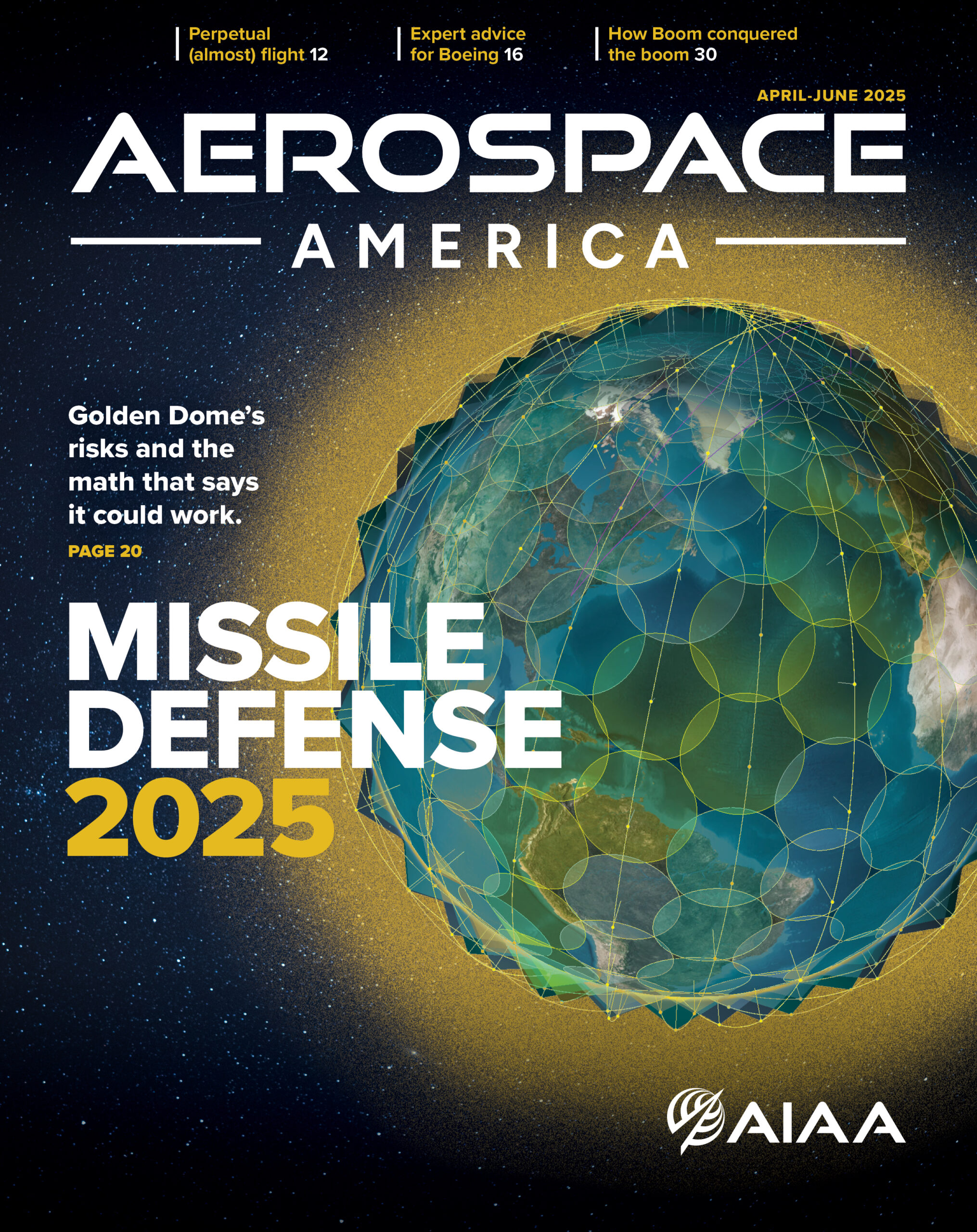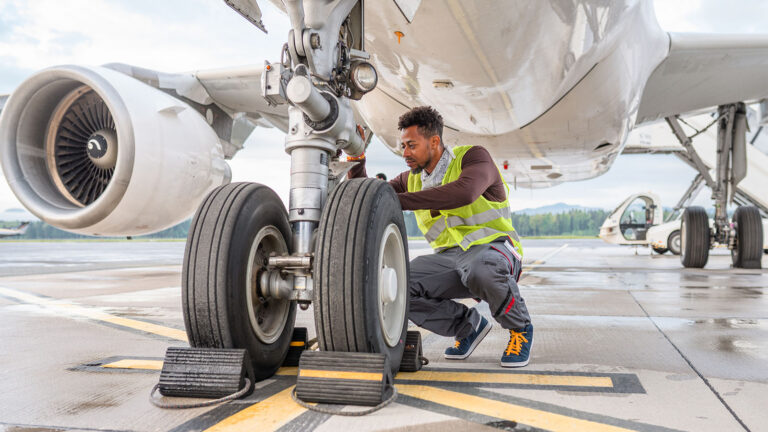Stay Up to Date
Submit your email address to receive the latest industry and Aerospace America news.
AIAA Announces Class of 2025 Honorary Fellows and Fellows
AIAA proudly congratulates its newly elected Class of 2025 Honorary Fellows and Fellows. The class will be inducted during a ceremony on Tuesday, 29 April, in Washington, DC, and celebrated during the AIAA Awards Gala on Wednesday, 30 April, at Grand Hyatt Washington, Washington, DC.
Honorary Fellow is AIAA’s highest distinction, recognizing preeminent individuals who have made significant contributions to the aerospace industry and who embody the highest possible standards in aeronautics and astronautics. In 1933, Orville Wright became the first AIAA Honorary Fellow. Today, 245 people have been named AIAA Honorary Fellow.
AIAA confers Fellow upon individuals in recognition of their notable and valuable contributions to the arts, sciences or technology of aeronautics and astronautics. Nominees are AIAA Associate Fellows. Since the inception of this honor 2,092 persons have been elected as an AIAA Fellow.
2025 AIAA Honorary Fellows
Maj. Gen. Charles F. Bolden Jr., USMC (Ret.), The Charles F. Bolden Group LLC
Alec Gallimore, Duke University
The Honorable Steven J. Isakowitz, The Aerospace Corporation
2025 AIAA Fellows
Maj. Gen. James B. Armor Jr., USAF (Ret.), The Armor Group LLC
Hamsa Balakrishnan, Massachusetts Institute of Technology
Brett A. Bednarcyk, NASA Glenn Research Center
John Maurice Carson III, NASA
Paul J. Cefola, University at Buffalo
Todd K. Citron, The Boeing Company
Stephen B. Clay, Air Force Research Laboratory
William A. Crossley, Purdue University
Boris Diskin, NASA Langley Research Center
Mary Lynne Dittmar, Axiom Space (retired) / Dittmar Associates
Stephen N. Frick, Lockheed Martin Space
Demoz Gebre-Egziabher, University of Minnesota
Luisella Giulicchi, European Space Agency
Vinay K. Goyal, The Aerospace Corporation
Michael J. Hirschberg, Vertical Flight Society
Tristram Tupper Hyde, NASA Goddard Space Flight Center
Oliver L.P. Masefield, SolvAero Consulting GmbH
Richard Gareth Morgan, University of Queensland
Natasha A. Neogi, NASA Langley Research Center
Robert Pearce, NASA
Mason Peck, Cornell University
Lisa J. Porter, LogiQ, Inc.
Joseph M. Powers, University of Notre Dame
Michael G. Ryschkewitsch, Johns Hopkins University Applied Physics Laboratory
Murray L. Scott, Advanced Composite Structures Australia
Philippe R. Spalart, Flexcompute
Paul F. Taylor, Gulfstream Aerospace Corporation
Manuel Torres, Lockheed Martin
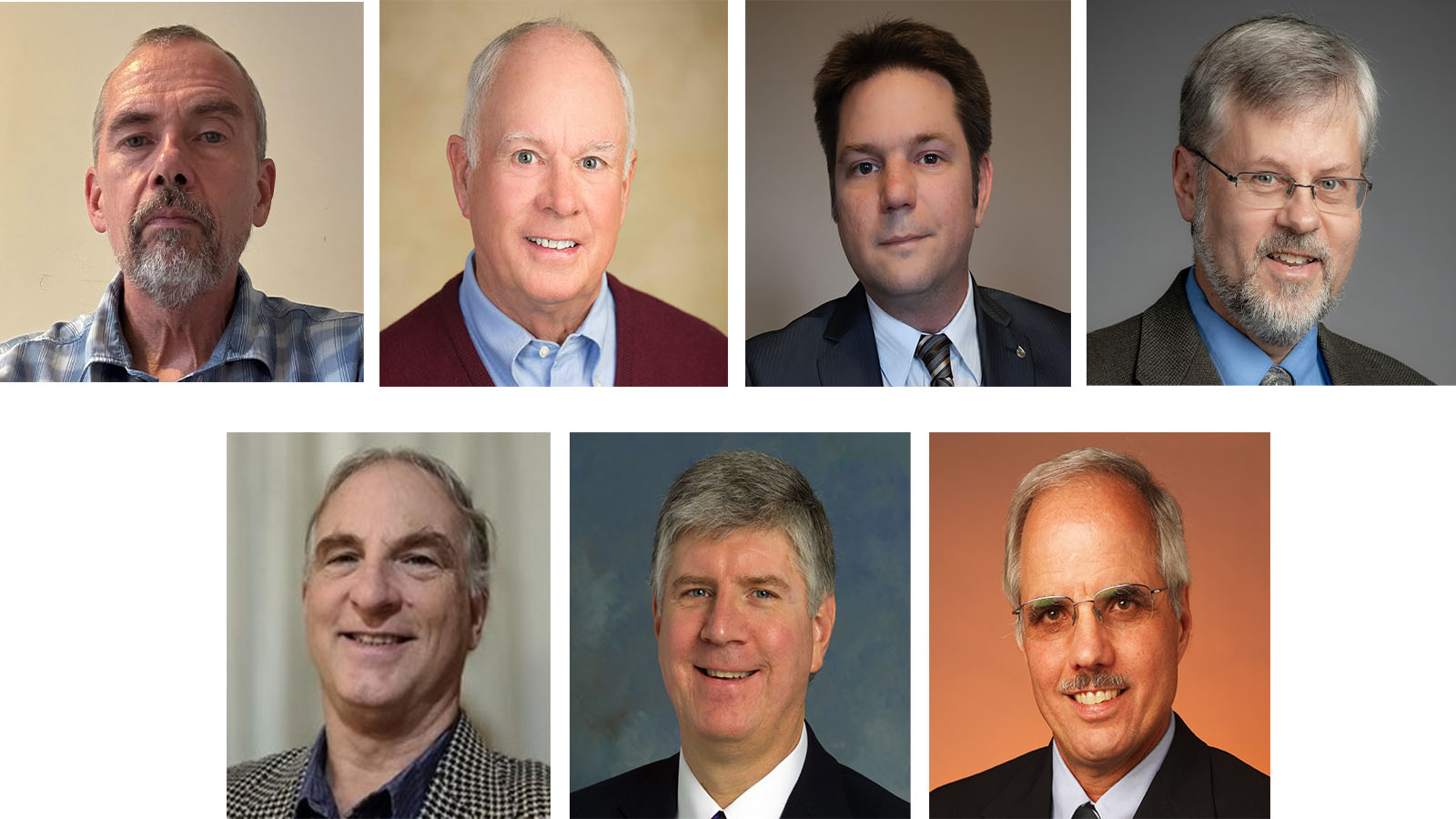
AIAA Announces 2025 Sustained Service Awards Winners
AIAA has announced the winners of the 2025 Sustained Service Awards. The award recognizes sustained, significant service and contributions to AIAA by members of the Institute. The 2025 recipients are:
Steven X. Bauer, NASA Langley Research Center
For sustained leadership, service, and contributions to the Hampton Roads Section, Region I, and AIAA National.
Bauer became an AIAA student member in 1981. He served as a student branch officer and has held many positions in the Hampton Roads Section, including section chair. He was the Region I Director for six years. Bauer has worked at NASA Langley Research Center since 1983 and is retiring in December 2024.
Gene R. Dionne, Lockheed Martin Corporation (retired)
For his passionate, unmatched support of AIAA and the Rocky Mountain Section through volunteering across all committees.
Dionne spent 26 years in the U.S. Air Force, mostly in space systems acquisition and technology development. He was intimate in the manufacturing, integration, test and launch/on-orbit operations of ~30 satellites. Dionne spent 22 years at Lockheed Martin Space in systems engineering and program management. In 2014, he was selected as AIAA Fellow and he served on the Fellows Selection Committee for three years. He was AIAA Rocky Mountain Section Chair and continued to assist on the section’s executive council for 20 years as “Fellow-at-large.”
Trevor S. Elliott, University of Tennessee at Chattanooga
For prolific, dedicated, and outstanding service to AIAA forums, technical committees, student teams, outreach groups, rocketry organizations, and aerospace communities leading to numerous student-led recognitions.
Elliott is a UC Foundation Associate Professor of Mechanical Engineering at the University of Tennessee at Chattanooga. He serves as primary Faculty Advisor for the UTC Racing Mocs, SAE Chapter, and the UTC Rocket Mocs, where he has guided teams that have won national placement in collegiate competitions and set a world record in amateur rocketry. He is a member of the AIAA Solid Rockets Technical Committee and Hybrid Rockets Technical Committee chair and technical discipline chair.
David C. Fleming, University of Michigan
For sustained service to the Cape Canaveral Section and Florida Institute of Technology Student Branch through continued participation, council leadership, and unwavering dedication to AIAA’s mission.
Fleming earned a B.S. degree in Aeronautics and Astronautics from MIT and M.S. and Ph.D. degrees from the University of Maryland, College Park. He served on the faculty of the Florida Institute of Technology for 28 years, including a term as department head. Fleming was faculty adviser of the AIAA Florida Tech Student Branch for over 25 years. Currently, he serves as Lecturer at the University of Michigan.
Aaron L. Harcrow Jr., No Box Innovations
For over 30 years of outstanding and sustained service to the Atlanta Section and Region II, contributing to the success of the Section.
Harcrow joined AIAA as a student member in 1981 and regards his 42-plus-years membership as a learning experience in the many ways to volunteer for AIAA, for which there appears to be no end in sight! He has developed multidisciplinary skills in aerospace engineering, systems engineering, project management, innovative design, product development, CAD/CAM/CNC, computer programming, and teaching undergraduate engineering courses, and he holds one USPTO patent.
Christopher J. Pestak, HX5, LLC
For dedicated service to AIAA and the field of aerospace for over 40 years, and holding significant leadership positions within AIAA.
Pestak is Program Manager of the Glenn Engineering and Research Support (GEARS) contract for HX5, LLC. He manages 350 staff supporting NASA Glenn Research Center performing wide-ranging work in space and aeronautics. Spaceflight systems have been a primary focus of his 42-year career. Pestak holds a B.S. in Electrical Engineering and an M.S. in Industrial Engineering, both from Cleveland State University. He is an AIAA Fellow.
Robert W. Pitz, Vanderbilt University
For over three decades of distinguished and continuous service to AIAA, especially in national leadership roles involving publication, honors, ethics, and technical committee activities.
Pitz has mechanical engineering degrees from Purdue University (B.S.) and UC Berkeley (M.S. and Ph.D.). After five years at GE Research, he joined Vanderbilt University where he is a Professor in the Department of Mechanical Engineering and served as Department Chair (1998–2017). He won the NSF Presidential Young Investigator Award (1987) and AIAA Best Paper Award in Propellants & Combustion (1996). Pitz is an AIAA Fellow, and also a Fellow of ASME and the Combustion Institute.

Making an Impact: AIAA Announces 2024 Region VII Student Conference Winners
AIAA has announced the winners of the 2024 Region VII Student Conference, held 25–26 November at Swinburne University of Technology, Melbourne, Australia, and online. Attendees presented 46 papers and represented 20 universities. The conference had a strong international presence with students from 11 countries including Australia, Bangladesh, China, India, Israel, Japan, New Zealand, Nigeria, South Korea, Turkey, the United Kingdom, and the United States. Students presented papers in four categories: high school/secondary school, undergraduate, masters, and undergraduate team. Their presentations were evaluated by industry peers with experience in the aerospace sector. Papers presented at the conference will be published by AIAA and available on Aerospace Research Center (ARC) in January 2025.
For the undergraduate, masters, and undergraduate team categories, first-place winners received a cash prize of $500 and an invitation to participate in the International Student Conference during the 2025 AIAA SciTech Forum, 6–10 January. Second-place winners received a cash prize of $300 and third-place received $250. The high school students received $100 for first place, $75 for second place, and $50 for third place.
High School Category
1st Place: Anay Ashwin, Haileybury College, Australia, “Venna Regolith Sample Acquisition Device – A Novel Proof of Concept for Lunar Rovers”
2nd Place: Henri Kim, Seoul Foreign School, South Korea, “Effects of Boeing 767 Winglet Types on Flight Efficiency: A Computational Fluid Dynamics Approach”
3rd Place: Cheney Wu and Nate Osikowicz, Cranbook Schools, United States, “An Airfoil Tensegrity Design: Concept, Algorithm Development, and Programming Implementation”
Undergraduate Category
1st Place: Said Mouhaiche and Anne Bettens, University of Sydney, Australia, “Lazily Reformulating Design Optimization as a Classification Problem”
2nd Place: Leon Phillips and Daniel Edgington-Mitchell, Monash University, Australia, “Investigating the Influence of Separate Propellant Streams in Rotating-Detonation Engine Injectors”
3rd Place: Thomas Finley and Daniel Edgington-Mitchell, Monash University, Australia, “Modelling and Schlieren Analysis of Shock Wave Reflections Over a Turbine Cascade”
Masters Category
1st Place: Zhen Hong Chai and Tulasi Parashar, Victoria University of Wellington, New Zealand, “Performance Insights into Applied-Field Magnetoplasmadynamic Thrusters with the Princeton AF-MPD Database”
2nd Place: Shiva Jogu and Karan Das, Amity University, India, “Mitigating Shock Wave Challenges through Secondary Recirculation in Mixed Compression Supersonic Air Intake”
3rd Place: Serika Yokoyama and Kikuko Miyata, Meijo University, Japan, “Discussion on Autonomous Sensor Data Selection Method for Planetary Rover Localization and its Verification”
Team Category
1st Place: Hardit Saini, Milcha Masresha, Andrews Agyei, Raima Rahman, Omar Abdi, Aamna Abbasi, Imad Foughali, and Eldad Avital, Queen Mary University of London, United Kingdom, “Small Horizontal Axis Wind Turbine Aerodynamic-Structural Design for Improved Performance Using Gurney Flaps”
2nd Place: Asif Hasnayeen, Md Redwan Iqbal, Farhan Syeed, Morsalin Sheikh, and Gp Capt A N Somanna, Military Institute of Science and Technology, Bangladesh, “Construction of a Small Fixed Wing UAV for Surveillance”
3rd Place: Lisa Dsouza, Adithya Vijay, Pranay Agrawal, Ullas AJ, Katkam Naveen, Anurag Kumar Jha, and NK Gahlot, Amity University, India, “Numerical Analysis of Pintle Nozzle Geometry Optimization for Improved Thrust in Rocket Engines”
AIAA student conferences are an opportunity for students to present and publish their work in front or their peers and members of the industry. Each of the AIAA seven regions host one conference each year. The Regional Student Conferences for Regions I-VI will take place in spring 2025. The AIAA Foundation sponsored this conference.
AIAA Foundation Day of Giving Surpasses Goal!
The AIAA Foundation celebrated its third annual Day of Giving on 3 December 2024, and with the support of 88 generous donors, we surpassed our fundraising goal, raising $126,000! These funds will help fuel the aspirations of the next generation of aerospace innovators and explorers.
Thanks to the continued generosity of the AIAA community, the Foundation will be able to provide over $160,000 annually in scholarships and graduate awards to high school seniors and university students. Additionally, we will distribute $77,000 each year in K-12 educator awards and grants, supporting hands-on programs like Design/Build/Fly, student conferences, and so much more.
There’s still time to make a difference! To contribute to the AIAA Foundation and help shape the future of aerospace, visit aiaa.org/foundation.
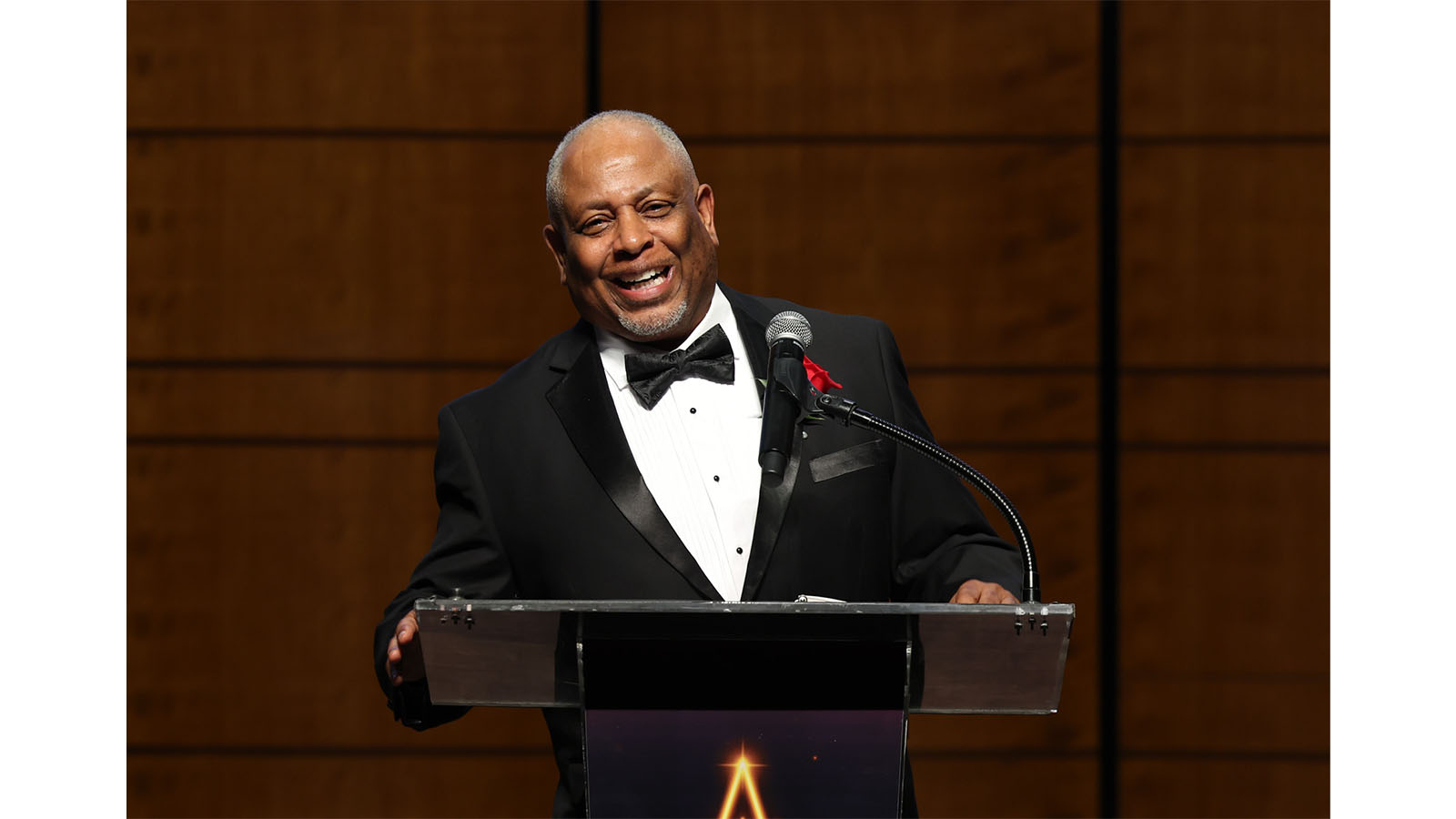
“The world is changing very fast. Our kids need to get on board and be part of the technology of the future and part of the creation of that technology. It’s important that we give kids opportunities… I tell my students ‘do the math; save the world!’” – Darryl Newhouse, 2024 Trailblazing STEM Educator Award Winner
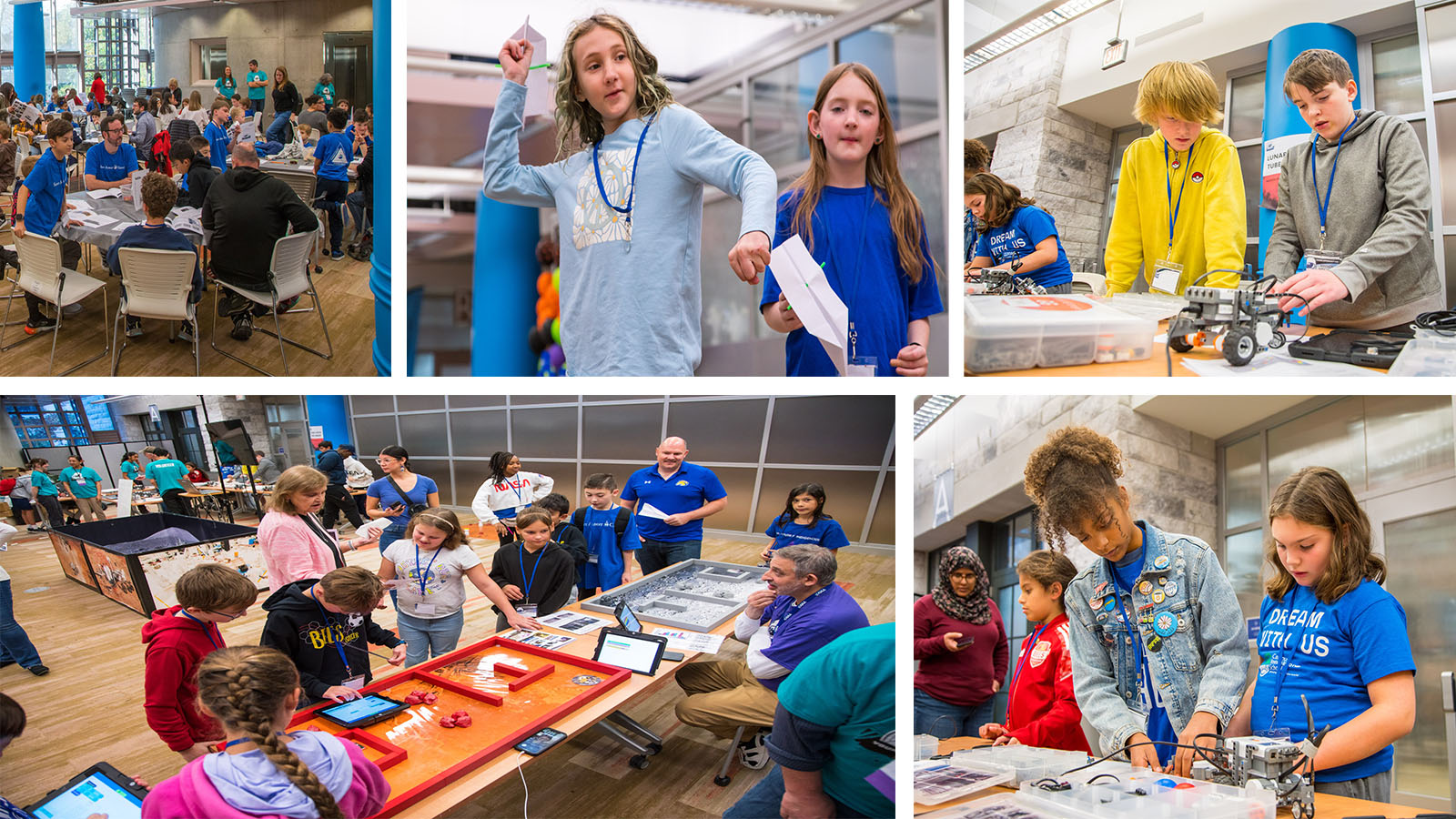
“Soaring High – Through the Decades” — Northern Ohio Section’s 30th Annual Young Astronaut Day
Young Astronaut Day, which started in 1992, is a STEM outreach event for students in grades 1st-12th. Held by the AIAA Northern Ohio Section on 2 November, students had the opportunity to work as a team to solve engineering challenges, ranging parachute drops and balloon cars to Lego robots. Competing teams are tasked to complete three activities that create one mission within a two-hour period, requiring them to build strong teamwork, communication, and critical thinking skills. Through these STEM activities and interacting with the scientists and engineers who are leading the activities and volunteering, students are educated and inspired by NASA and the STEM field.
AIAA Sydney Section Dives into an Aviation Mystery
On 7 November, Glenn Horrocks from NSW SES Bush Search and Rescue was hosted by the AIAA Sydney Section to discuss the 40+-year search for a missing plane. The Cessna 210 VH-MDX disappeared in August 1981 as it was flying to Sydney over national parkland.
Despite annual searches by NSW SES Bush Search and Rescue and efforts of other groups, the airplane and its occupants have still not been found. During Horrocks’ own 30-year research efforts searching for the lost airplane, GPS technology and communications have come a long way, and current searches for the aircraft also are used as training exercises for State Emergency Service volunteers.
AIAA Sydney Section Chair Tjasa Boh Whiteman has been an SES volunteer since 2019 and she is confident that aviation science and the almost 200 AIAA members in NSW can assist looking the airplane, using their technical knowledge to fill in gaps. More information about the mystery and current search can be found at www.facebook.com/AIAASydneySection.
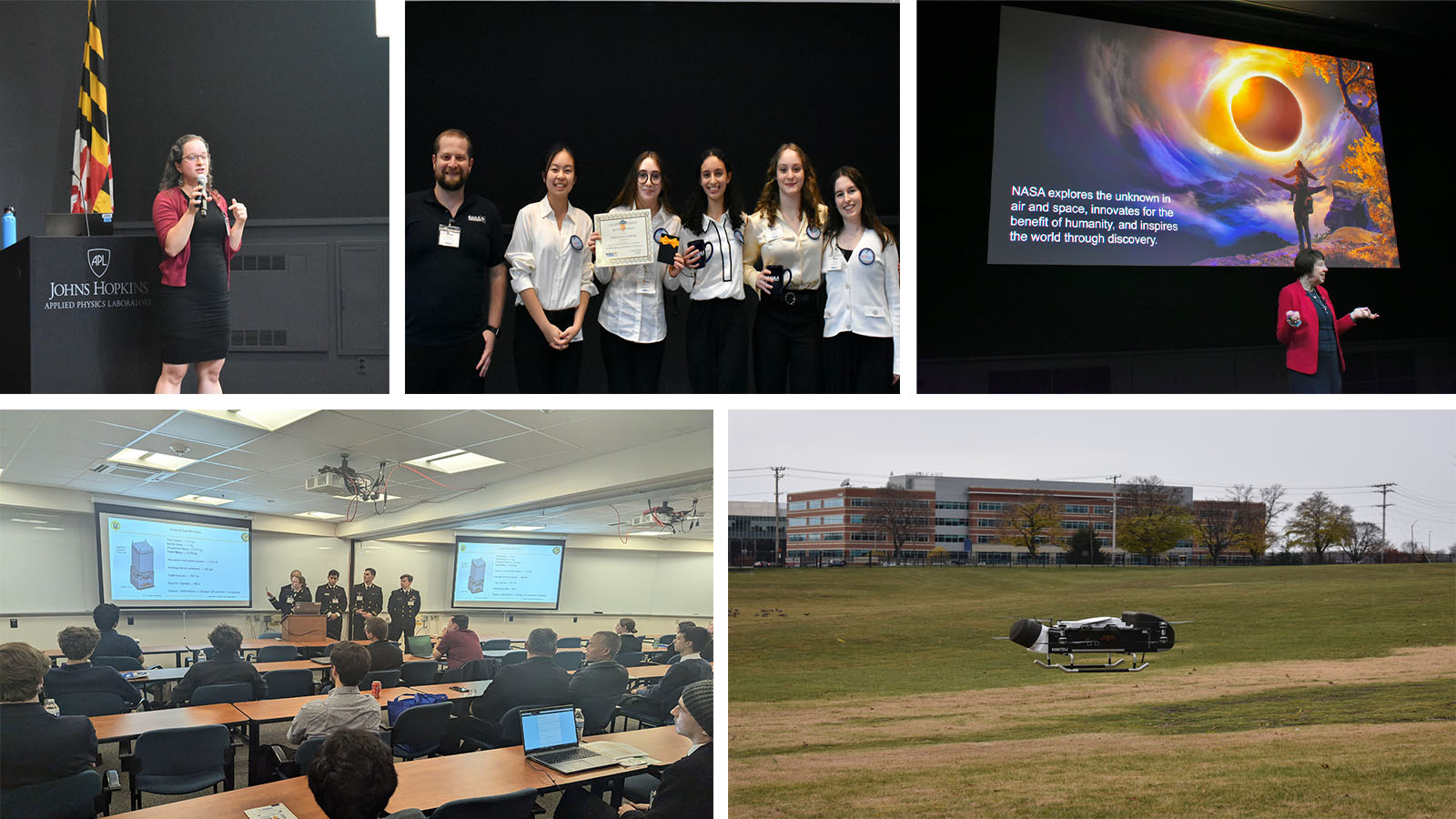
NASA's Nicola Fox Keynoted YPSE Conference
The AIAA Mid-Atlantic Section hosted its annual Young Professionals, Students, and Educators Conference (YPSE) on 22 November in Laurel, MD. This conference brings together students, educators, and young professionals to share their work and make connections within the broader aerospace industry. This year Nicola Fox, Associate Administrator, Science Mission Directorate, NASA, gave the technical keynote on NASA’s vision for powerful science. Alice Corcoros, Dragonfly Lidar Sensor Lead, Johns Hopkins University Applied Physics Laboratory, and SES Diversity Advisory Team (DAT) Chair, spoke on the current state of DEIA in aerospace and what can be done to keep moving forward. Also included in the day’s events was a panel on national security space in the United States. The highlight of the day for many was the Dragonfly Test Platform Display and Demo, which was demonstrated outside as a crowd of attendees looked on.
Details for the 2025 YPSE can be found at aiaaypse.com.
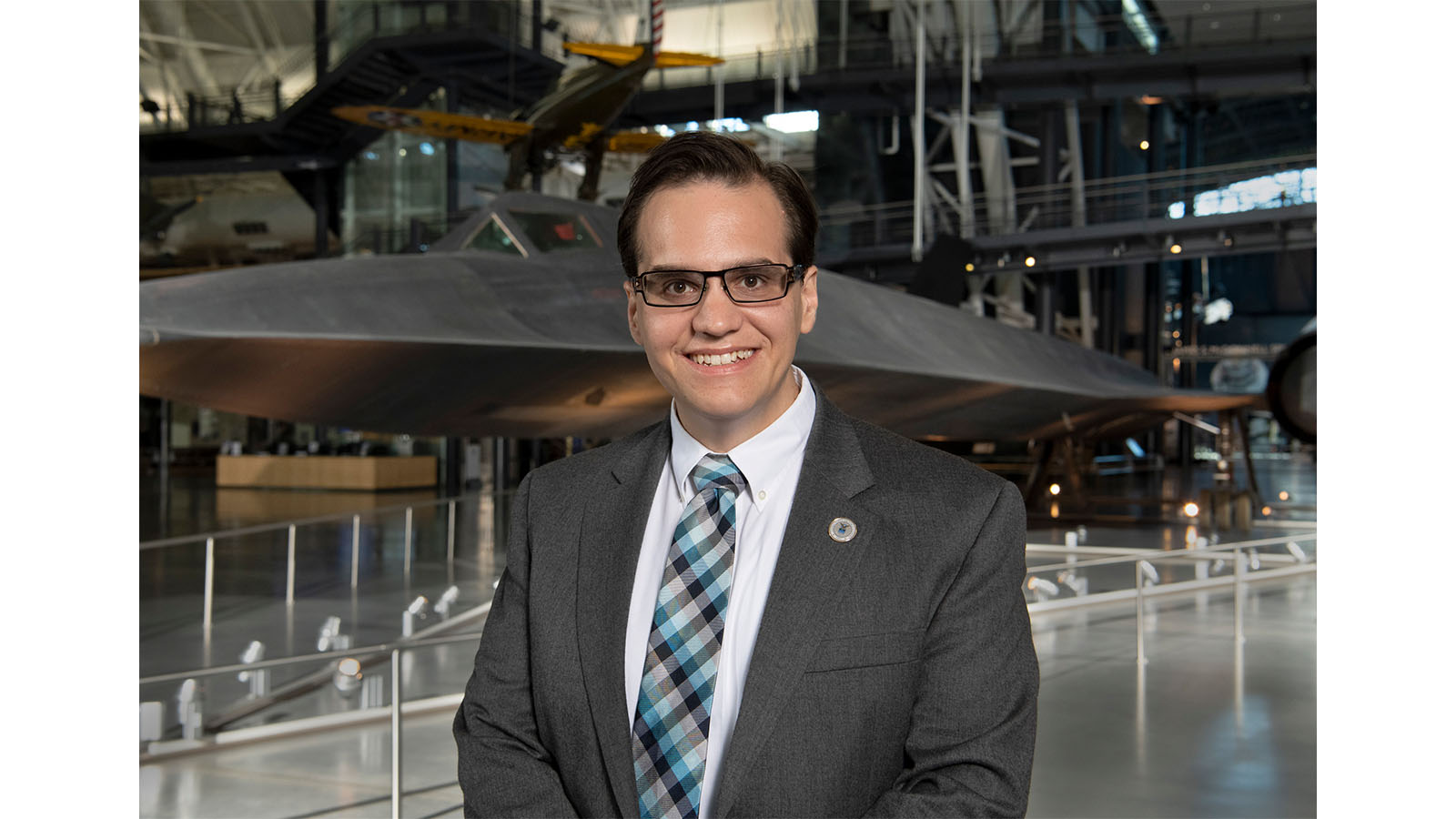
Spotlight on the 2025 Gardner-Lasser Aerospace History Literature Award Winner
Author: Michael Hankins (https://mwhankins.com)
Title: Flying Camelot: The F-15, the F-16, and the Weaponization of Fighter Pilot Nostalgia
Award: Presented for the best original contribution to the field of aeronautical or astronautical non-fiction literature published in the last five years dealing with the science, technology, and/or impact of aeronautics or astronautics on society.
Description: Flying Camelot brings us back to the post-Vietnam era, when the U.S. Air Force launched two state-of-the art fighter aircraft: the F-15 Eagle and the F-16 Fighting Falcon. It was an era when debates about aircraft superiority went public—and these were not uncontested discussions. Hankins, a curator at the National Air and Space Museum, delves deep into the fighter pilot culture that gave rise to both designs, showing how a small but vocal group of pilots, engineers, and analysts in the Department of Defense weaponized their own culture to affect technological development and larger political change.
Why did you write this book?
I knew I wanted to write about the F-15 and F-16 fighters, both because I found them inherently interesting, and because they represented a moment when the U.S. Air Force changed the types of aircraft it developed – moving away from multirole airplanes and toward more specialized systems. The more I read about the development of these aircraft, the more I discovered these stories of seemingly over-the-top fighter pilots and similarly-minded people caught in this culture clash with larger defense institutions. I got hooked on exploring those conflicts. As I looked at more historical evidence, these stories also proved to be a good opportunity to combine ideas from other sub-fields of history as well as to reevaluate some important Air Force figures.
Who should read it?
I would hope that anyone who is a bit of a nerd for airplanes (like myself) would enjoy this book. If you grew up building model airplanes or looking at those coffee table aircraft books, then you might enjoy Flying Camelot. But as I was writing it, I had a few other specific audiences in mind. First, I was hoping that people involved in the design, development, and procurement of military technology might get some insight from this book about the ways that culture shapes our choices about technology design. Second, I was hoping to build, or at least strengthen, a bridge between historians of technology and more traditional military historians. I think those two fields have a lot to say to each other, and would benefit from talking more.
What’s next for you?
I have written chapters that will be included in a few multi-author volumes coming out soon, and some of those are about issues in Flying Camelot that I wanted to explore further, like how fighter pilot culture changed over time, and how the F-15 and F-16 were marketed and presented publicly. I’m also working on a second book that looks at the development of stealth aircraft technology, which I’m very excited about.
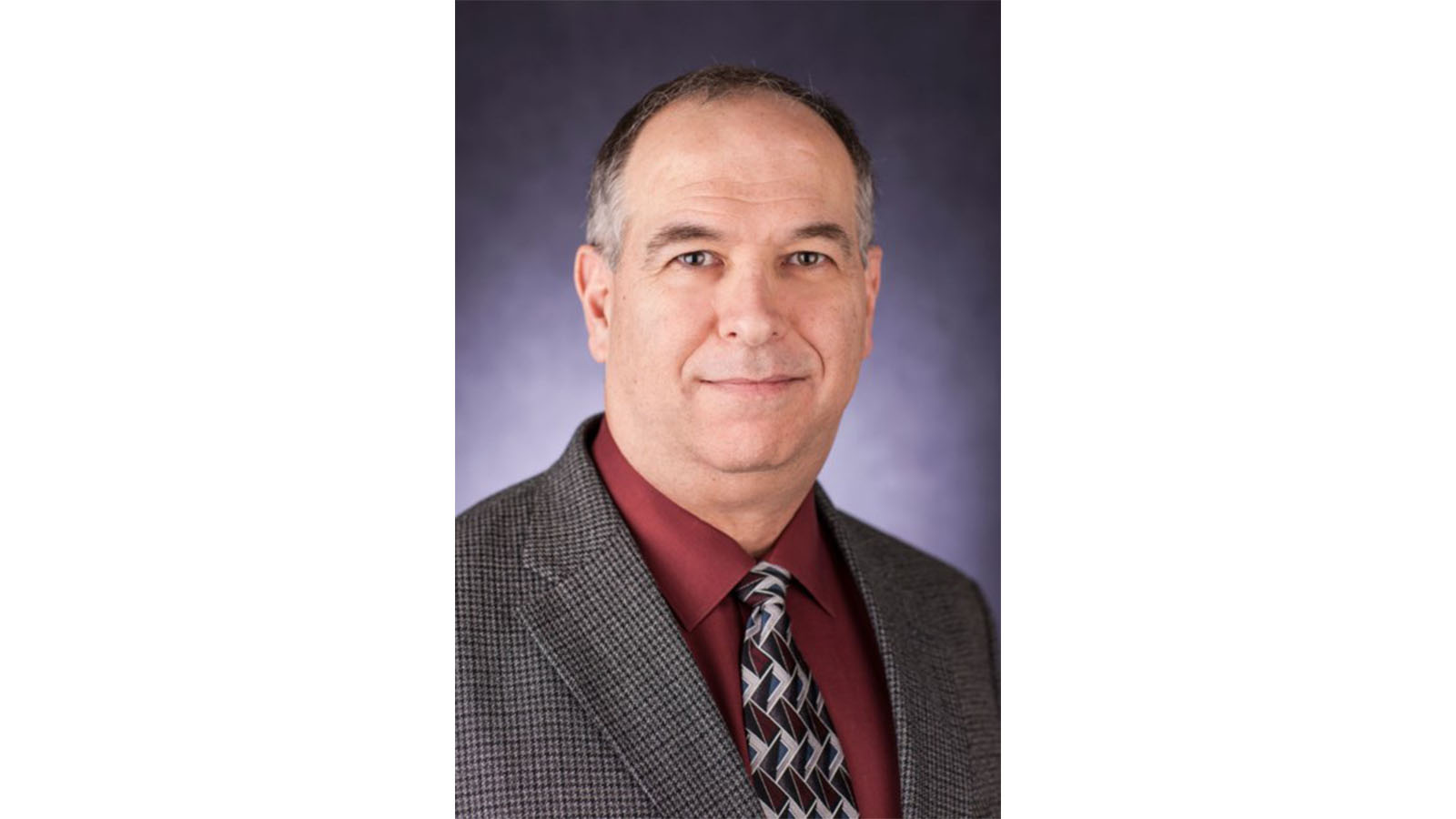
AIAA Associate Fellow Karman Died in February 2024
Steve L. Karman died on 25 February. He was 64 years old.
Karman attended the Air Force Academy for a year before transferring to Texas A&M to complete his bachelor’s and master’s degrees. He received a Ph.D. in Aerospace Engineering from the University of Texas at Arlington in 1991, while working full-time at General Dynamics.
During his career Karman developed technology for solving the Navier-Stokes equations over complex geometries. He also focused on developing methods for generating unstructured grids, and he contributed several innovative and unique algorithms, including viscous-layer insertion, elliptic smoothing incorporating the Winslow equations, virtual control volumes, geometry parameterization, and most recently, the currently only viable means for curving meshes for high-order simulations. Karman was an active member of AIAA, writing numerous papers, organizing and chairing sessions at conferences, serving on technical committees (Fluid Dynamics TC, Meshing, Visualization and Computational Environments TC, and Applied Aerodynamics TC), and actively participating in workshops.
Associate Fellow Norman Died in November 2024
Wendell S. Norman died on 4 November. He was 91 years old.
Norman received his BSME from the University of Kentucky. He received his M.S. and Ph.D. in aeronautical engineering from Purdue University. As a 1st Lieutenant in the U.S. Air Force, he taught aerodynamics, flight mechanics, and space flight mechanics at the U.S. Air Force Academy. He spent many years working with the Sverdrup Corporation at the Arnold Engineering Development Center (AEDC) in Tullahoma where he held several management positions and also served as general manager for the Test Operations Division and as chief scientist.
When Sverdrup was awarded a contract with NASA Lewis Research Center, Norman was made general manager and later vice president with a staff that grew to 600. Sverdrup provided scientific and technical support for NASA Lewis’ efforts in propulsion, space experiments, structural analysis, aerodynamics research, facilities operations, and computer support. After seven years in Cleveland, Norman became senior vice president with Sverdrup with corporate oversight responsibility for contract operations in Ohio, Florida, and Utah.
An AIAA Associate Fellow, Norman also was a member of ASME and the Tennessee Society of Professional Engineers. He was an adjunct professor at the University of Tennessee Space Institute (1964–1983), and he served on the Engineering Accreditation Commission (1980–1989) and the Executive Committee (1983–1985), traveling to U.S. universities to evaluate engineering programs. His awards included the Distinguished Engineering Alumni Award (1978) and Outstanding Aerospace Engineer for the School of Aeronautics & Astronautics (1999) both from Purdue, and AEDC Fellow from Arnold Engineering Development Center (2004).
Stay Up to Date
Submit your email address to receive the latest industry and Aerospace America news.
